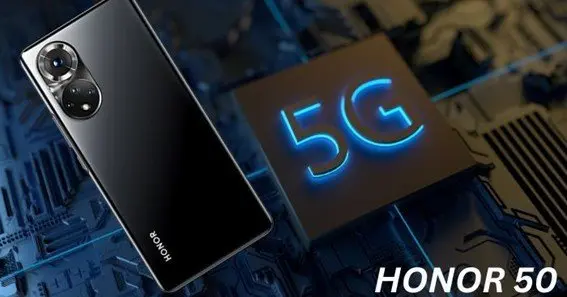5G is the fifth generation of wireless communication technology, which is an upgrade from the previous 4G LTE (Long-Term Evolution) technology. The main differences between 5g vs 4g are:
Speed: 5G promises much faster data transfer speeds than 4G, with speeds up to 100 times faster than 4G.
Latency: 5G is expected to have much lower latency than 4G, which means that there will be less delay in data transfer, making it possible for applications that require real-time communication, like autonomous vehicles and remote surgeries.
Capacity: 5G is designed to handle much more data than 4G, which means that it can support more devices connected to the network without compromising the performance.
Energy Efficiency: 5G uses less power than 4G, which means that it can help devices to last longer on a single battery charge.
Best 5G Phones
HONOR 505g
HONOR 505G represents the new aesthetics of mobile phones, setting a new milestone in design and industry. Its complex but dual-texture and dual-film technology allow each color to sparkle like diamonds.
Furthermore, HONOR 50 features a 4300mAh battery, Qualcomm Snapdragon 778G, 6GB RAM+128GB ROM, 66W SuperCharge, Magic UI 4.2, 6.57 inches display, and 108MP Ultra clear main camera.
HONOR Magic5 Pro5g
First, the Honor Magic Pro5g is a powerful smartphone that supports 5g networks. It has released in 2023 with 6.81 inches Suspended Four-curved screen and 3 Ultra HD main cameras. Its generation is the Snapdragon 8 with two chips and 66W SuperCharge. With a Super Dynamic vivid display, Magic5 has a 1.07 billion colors display.
Click here – What Is Pronator Drift?
Role of 5G in IoT
As the world becomes increasingly digitized, the Role of 5G in IoT is proving to be paramount in facilitating seamless connectivity between devices.
The fifth-generation wireless technology, with its high speed and low latency, enables faster, more reliable IoT systems, creating a wide range of opportunities for businesses and consumers alike. With the widespread adoption of 5G, we can expect IoT to continue to flourish, transforming the way we live, work, and interact with technology.
Also Read : What influences Gold prices: A guide for investors
How 5G is Revolutionizing IoT Applications
5G is the fifth generation of wireless technology that is set to revolutionize the way we connect and communicate. It is designed to be faster, more reliable, and more efficient than its predecessors, making it the perfect platform for the Internet of Things (IoT).
Real-time Data Transmission
Also Read : How To Avoid Demurrage Fees in 2023
With 5G, data collected from connected devices can be transmitted in real-time, improving IoT application performance. This means that devices can communicate with each other faster and more efficiently, allowing for more accurate and timely decision-making.
New IoT Applications
5G enables new IoT applications that were previously not possible with 4G or other wireless technologies. The high bandwidth of 5G provides more capacity to handle the massive amount of data generated from smart devices.
This allows for advanced applications such as remote surgeries, augmented reality, and virtual reality to be more accurate and reliable.
Click here – What Is Hyper Independence?
Improved Capacity
The high bandwidth of 5G also means that more devices can be connected to the network at the same time without compromising performance. This is particularly important in environments where there are a large number of connected devices, such as smart cities or industrial settings.
Increased Reliability
5G is designed to be more reliable than previous wireless technologies, with lower latency and fewer dropped connections. This is essential for applications that require real-time communication, such as autonomous vehicles or remote surgeries.
Opportunities for Innovation
In summary, 5G is a game-changer in IoT applications, offering new opportunities and possibilities for innovation.

